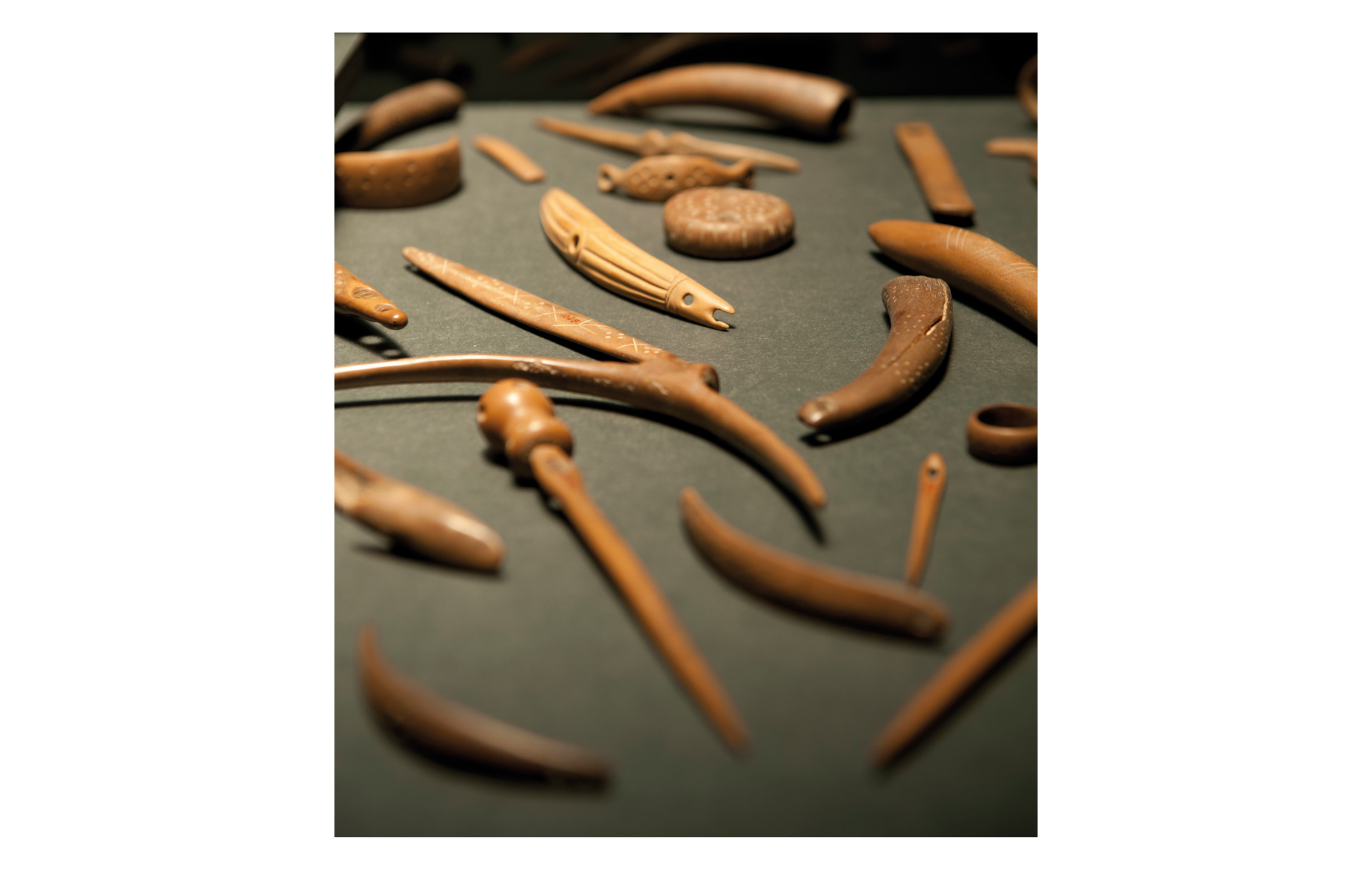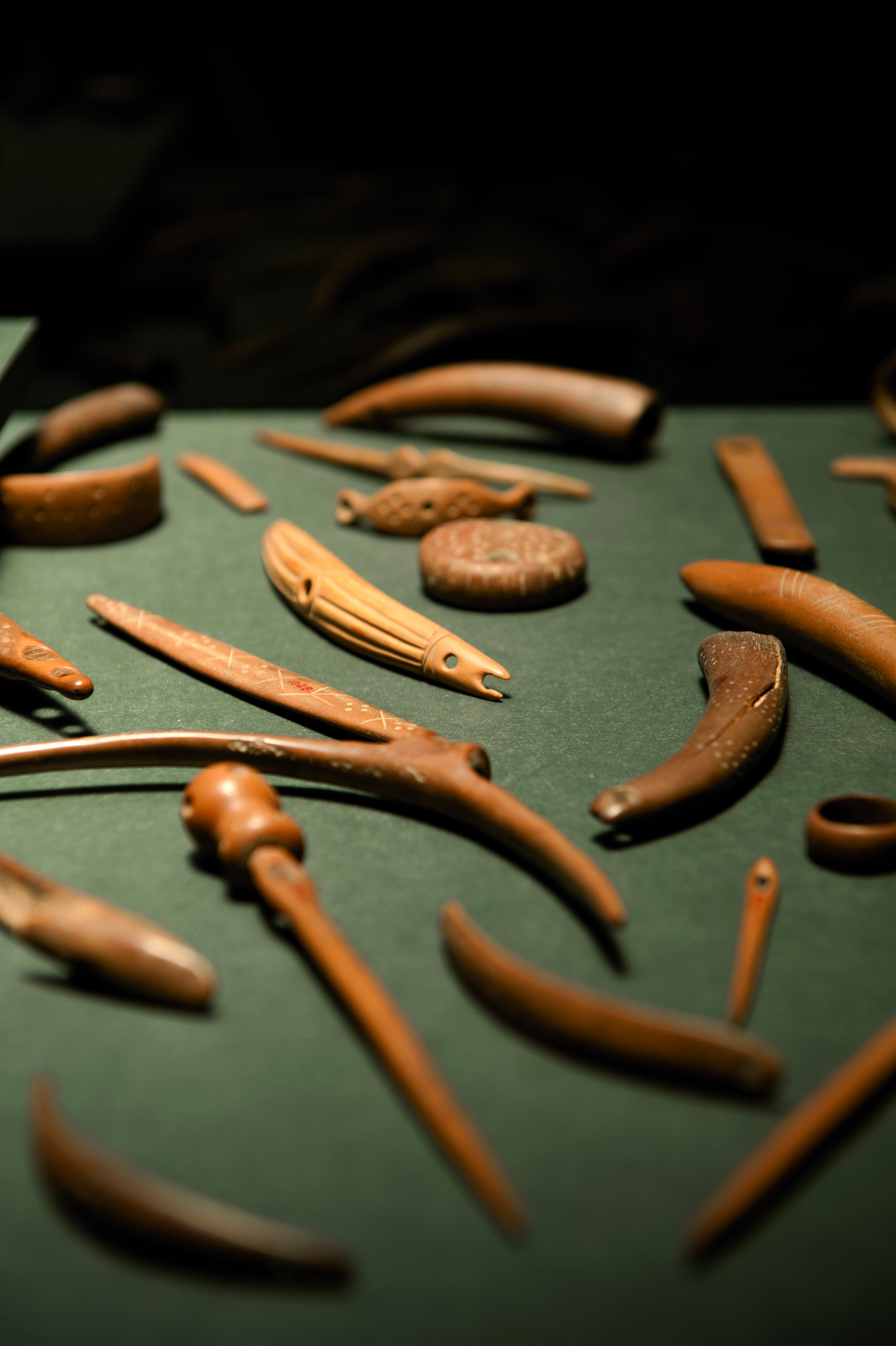Forgeries of the Horn Age
Beschreibung
Made of bone and stag antlers, the ‘âge de la Corne’ (Horn Age) objects have been produced around 1882 by an amateur named Gottlieb Kaiser. According to his account, they were found in levels below the Neolithic layers, on the palafittic sites of Forel and Cortaillod (Lake Neuchâtel). For Kaiser, these pieces testified to the existence of a new archaeological period that he named the ‘Horn Age’. The variety of forms, the exuberance of decoration and the abundance of finds raised doubts among the archaeological community. In fact, the stakes were high. The new period to which these pieces testified, called into question the established state of knowledge. They undermined the credibility of Swiss lake-dwelling excavations and called into question the authenticity of the reference collections held in museums. Finally, like many other such controversies, this forgery case contributed to the development of the discipline. Firstly, the production of forgeries requires specific skills including a sense of observation and a mastery of technical gestures. Moreover, to be plausible, forgers have to align themselves with the expectations of science and try to respond to an epistemological demand. Forgeries have also contributed to the development of analysis methods and techniques intended to unmask them, as well as to the establishment of new intellectual authorities – like commissions of experts – legitimised to provide proof by establishing reliability criteria for distinguishing between what is ‘true’ and what is ‘false’.
References:
- Marc-Antoine Kaeser (dir.) (2011): L’Âge du Faux: L’authenticité en archéologie, Hauterive : Laténium.
- Marc-Antoine Kaeser (2024): «Les faux et les fraudes en archéologie», in: V. Negri & N. Schlanger (dirs.): 1941: Genèse et développement d’une loi sur l’archéologie, Paris: La Documentation française, 141-148 ; 868-873.
- Cloé Lehmann (2018): «L’âge de la Corne (1882-1887): analyse historique, épistémologique et archéologique d’un production suisse de falsifications lacustres », Artefact 6 31/05/2018, <http://journals.openedition.org/artefact/826>; DOI: <https://doi.org/10.4000/artefact.826, 77-91>.
References:
- Marc-Antoine Kaeser (dir.) (2011): L’Âge du Faux: L’authenticité en archéologie, Hauterive : Laténium.
- Marc-Antoine Kaeser (2024): «Les faux et les fraudes en archéologie», in: V. Negri & N. Schlanger (dirs.): 1941: Genèse et développement d’une loi sur l’archéologie, Paris: La Documentation française, 141-148 ; 868-873.
- Cloé Lehmann (2018): «L’âge de la Corne (1882-1887): analyse historique, épistémologique et archéologique d’un production suisse de falsifications lacustres », Artefact 6 31/05/2018, <http://journals.openedition.org/artefact/826>; DOI: <https://doi.org/10.4000/artefact.826, 77-91>.
Kurzbeschreibung
Made of bone and stag antlers, the ‘âge de la Corne’ (Horn Age) objects have been produced around 1882 by an amateur named Gottlieb Kaiser. According to his account, they were found in levels below the Neolithic layers, on the palafittic sites of Forel and Cortaillod (Lake Neuchâtel).
Typ
Decorated ornaments and tools
Thema
forgery, history of archaeology, pile-dwellings, Lake of Neuchâtel, Switzerland
Beteiligte Personen und Organisationen
These forgeries, made between 1882 and 1887, were acquired by private collectors and museums, who believed them to be authentic prehistoric artefacts from a lake-dwelling context. The extent of their circulation, the number of objects are not known. These objects entered the collections of the Musée de Neuchâtel as donations, acquisitions and exchanges. The Articles published in the Argentinean press talk about this case of forgery, which suggests that it was known far and wide.
Zeit
1882 - 1887
Ort
Cortaillod (NE) and Forel (FR), Switzerland
Material/Technik
Animal bones and red deer antlers - 19th century techniques of cutting, polishing and engraving
Förderung
Project: SciCoMove - Scientific Collections on the Move: Provincial Museums, Archives and Collecting Practices (1800-1950).
Funding: This project has received funding from the European Union’s Horizon 2020 research and innovation programme under the Marie Skłodowska-Curie grant agreement No 101007579.
The contents of this publication are the sole responsibility of the SciCoMove consortium and do not necessarily reflect the opinion of the European Union.
Funding: This project has received funding from the European Union’s Horizon 2020 research and innovation programme under the Marie Skłodowska-Curie grant agreement No 101007579.
The contents of this publication are the sole responsibility of the SciCoMove consortium and do not necessarily reflect the opinion of the European Union.
Dateien


Quellenangabe
„Forgeries of the Horn Age,” SciCoMove, zuletzt aufgerufen am 1. Juli 2025, https://ausstellungen.deutsche-digitale-bibliothek.de/scicomove/items/show/11.
